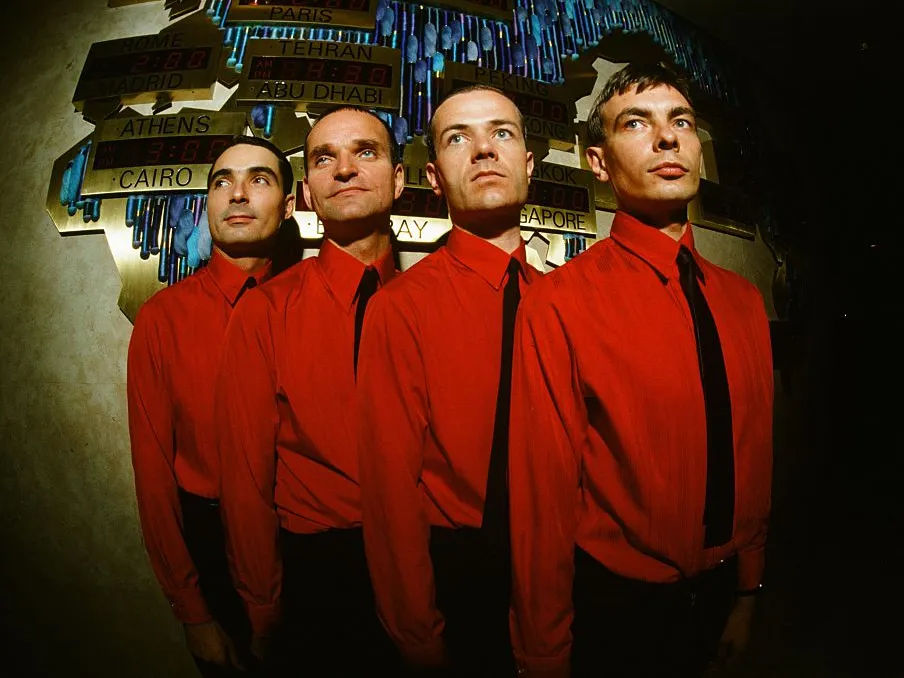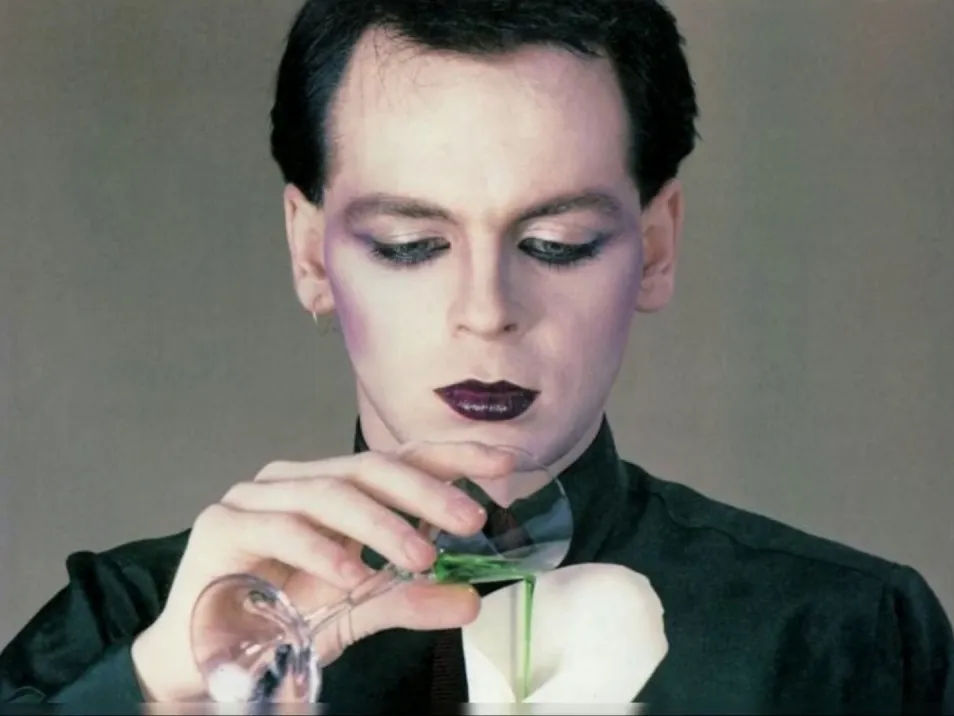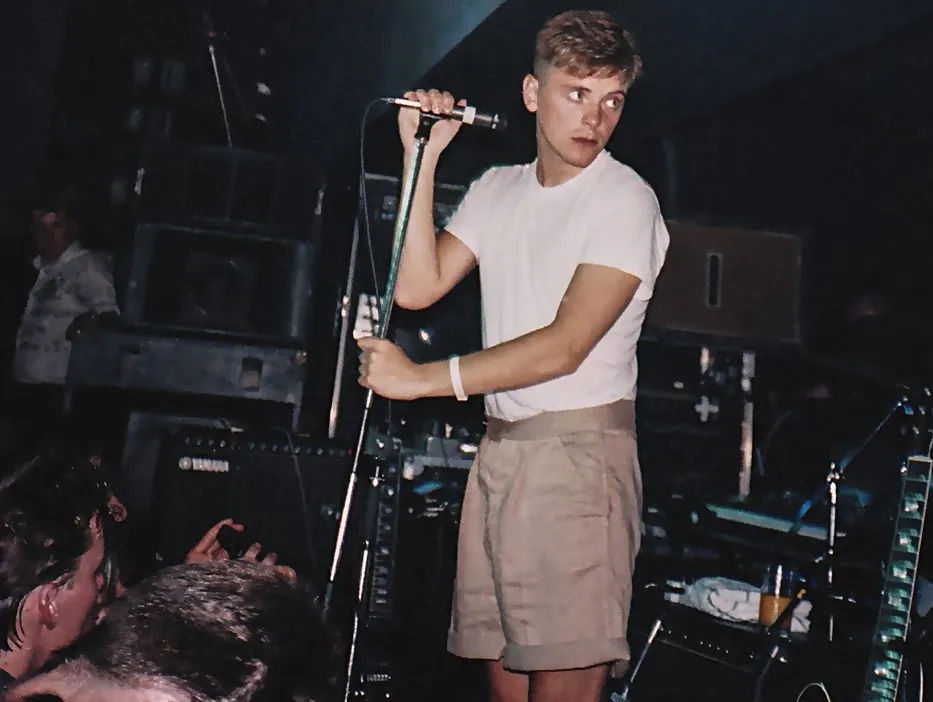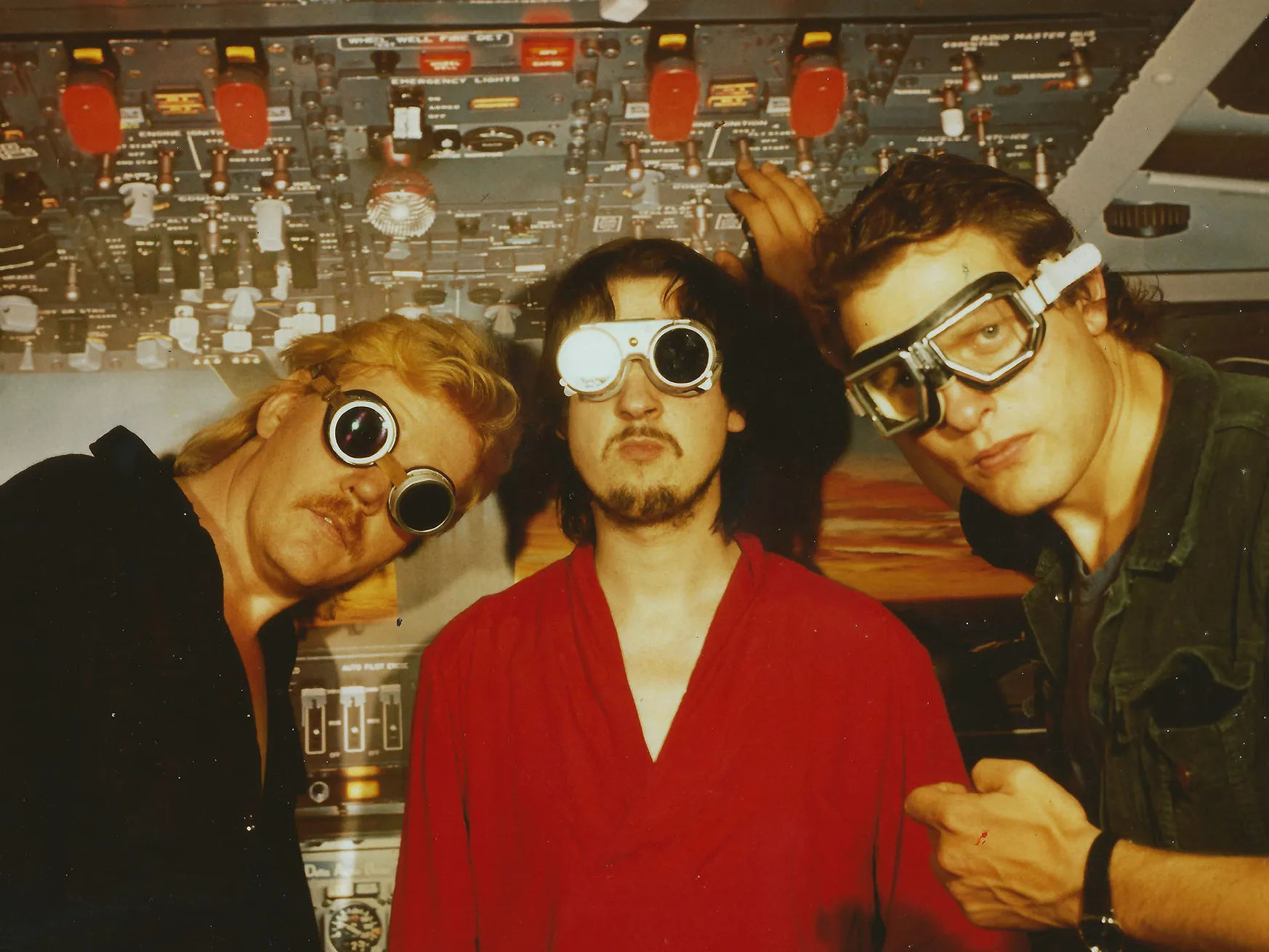In the 1960s, the space age spurred technological advancements that reshaped pop music. Musicians, inspired by the space race and science fiction explored futuristic themes where man and machine converged.
Lyrical themes reflected the speculative visions of science fiction, painting portraits of utopian societies and dystopian futures. Robots entered the room.
Robots enter the room
As mankind ventured into space during the mid-20th century, pop music began echoing the awe and fascination inspired by cosmic exploration. David Bowie’s Space Oddity and Joe Meek and the Blue Men’s I Hear a New World reflected themes of space travel, and the awe and wonder inspired by the possibilities of space travel.
Similarly, experimental composers explored beyond traditional musical boundaries. Visionary figures such as Karlheinz Stockhausen pioneered electronic music, challenging conventions with compositions like Kontakte and Spiral I. These groundbreaking pieces integrated electronic and acoustic elements. Kontakte, written in 1960, is a landmark piece in electronic music, incorporating a combination of electronically generated sounds, such as sine waves, oscillating tones and filtered noise, alongside traditional instruments like piano and percussion.
Avant-garde movements like musique concrète pushed the limits of musical expression, as heard in Jacques Lasry’s Manège and Mars ou Jupiter, which used recorded sounds to craft out-of-this-world-sounding music.
Meanwhile, the BBC Radiophonic Workshop revolutionized music production with the original theme for Doctor Who. Composed by Ron Grainer and realized by the workshop, the electronic theme captured the spirit of space adventure and otherworldly exploration.
Kraftwerk über alles
The krautrock movement of 1970s Germany provided fertile ground for the emergence of musical futurism, with Kraftwerk standing at its vanguard. While electronic experimentation existed prior to Kraftwerk, the band’s arrival marked a significant shift towards a fully synthesized sound.
Formed in Düsseldorf in 1970, Kraftwerk, comprised of Ralf Hütter, Florian Schneider, Wolfgang Flür, and Karl Bartos, among others, embraced synthesizers and drum machines over traditional instruments. Their 1974 release, Autobahn, propelled them to international acclaim, ushering in a new era of electronic music characterized by streamlined futurism.

Kraftwerk’s mastery of both traditional and avant-garde musical elements allowed them to transcend the limitations of technology at the time, introducing melodic intricacy, harmonic richness, and structural complexity to their compositions. Their Kling Klang Studios became a hub for electronic music innovation, where they meticulously crafted their music, often customizing or building their own instruments and equipment.
Seeking to establish a purely European sound, Kraftwerk drew inspiration from their industrial surroundings and modern urban life. Their music, rooted in German musical language, blended elements of Bach and Schubert with electronic rhythms, epitomized in such tracks as Das Model and Neonlicht from their 1978 release, Die Mensch-Machine.
Kraftwerk’s pioneering vision paved the way for generations of electronic musicians, shaping a musical language that was modern, industrial, and unmistakably Germanic. Their meticulous craftsmanship and commitment to innovation cemented their status as true innovators and visionaries in music.
The robots are coming
Kraftwerk’s impact extended beyond their music, permeating into visual aesthetics and stage performances where band members adopted robotic personas, blurring the lines between man and machine. This visual identity complemented the mechanical qualities of their music.
In the early 1980s, Kraftwerk’s influence reached across the Atlantic, shaping the burgeoning hip-hop and electro scenes in the US. Artists like Afrika Bambaataa and the Soulsonic Force “heavily sampled” Kraftwerk’s records, as heard in Bambaataa’s Planet Rock which draws from Kraftwerk’s Trans-Europe Express and Numbers.

Similarly, Kraftwerk’s impact resonated within the New Romantic movement and early synth-pop bands in the UK. Bands like Spandau Ballet drew inspiration from Kraftwerk’s European aesthetics, blending elements of synth-pop, glam rock, and electronic music into their grandiose vision. Post-punk and synth-pop bands such as Gary Numan, Depeche Mode, OMD, Joy Division, and New Order, influenced by Kraftwerk’s pioneering electronic sound, forged a new wave of pop music that combined innovation with accessibility. While these bands embraced a more commercially viable sound, they retained traces of Kraftwerk’s influence in their music, whether through Numan’s dystopian narratives, Depeche Mode’s brooding anthems, or New Order’s fusion of danceable rhythms and melancholic melodies.
The future is awful!
English synth-pop acts of the 1980s often grappled into the darker aspects of technological progress, exploring themes of alienation, surveillance, and societal decay. Gary Numan’s album Replicas presents a bleak vision of the future, where humanity is overrun by technology and artificial intelligence. Tracks like Are Friends’ Electric? and Down in the Park depict a society marked by social isolation, violence, and paranoia.

John Foxx’s debut solo album Metamatic also delves into themes of urban alienation and existential despair. Foxx’s Underpass and He’s a Liquid paint a stark portrait of a world devoid of human connection, lost amongst the machinery of urban life.
While New Order’s Power, Corruption & Lies may not be as overtly dystopian, tracks like Your Silent Face and Age of Consent reflect a sense of disillusionment with the contemporary landscape.
These pessimistic themes resonate deeply with the English psyche, influenced by a literary tradition characterized by scepticism and existential angst. Works like George Orwell’s 1984 and Aldous Huxley’s Brave New World have left a lasting imprint on English literature and pop music alike. J.G. Ballard’s unsettling novel Crash, which explores themes of modernity and eroticism, was a direct influence on the song Warm Leatherette by The Normal.
“Science and technology multiply around us. To an increasing extent they dictate the languages in which we speak and think. Either we use those languages, or we remain mute.” ― J.G. Ballard

The future is great!
In contrast, futuristic pop on the Eoropean continent tended to be more optimistic.
Tangerine Dream’s Phaedra combines ethereal synthesizers and hypnotic rhythms to create a sense of transcendence and awe.

Jean-Michel Jarre’s Oxygène presents a utopian vision of harmony between humanity, nature, and technology. Similarly, Harald Grosskopf’s Synthesist heralds a cybernetic future of wonder and possibility.
Such visions are found in the works of authors like Johann Wolfgang von Goethe, Friedrich Schiller, and Friedrich Nietzsche. Schiller believed that through the cultivation of aesthetic sensibility, individuals could transcend their mundane existence and attain a higher state of moral and intellectual refinement.
Schiller’s On the Aesthetic Education of Man (Über die ästhetische Erziehung des Menschen) argues for the transformative power of art in elevating humanity and fostering a harmonious society.
Goethe’s masterpiece Faust explores the existential European impulse to pursue the infinite (which can backfire).
Nietzsche’s works examine the idea of the superman who transcends conventional morality to embrace life to its fullest. By drawing on these European philosophical and literary traditions, future-facing European musicians explored the possibility of technology elevating human potential.
Robots on the dancefloor
From the late 1970s and 1980s, the northern and southern regions of Europe developed distinct electronic sounds, reflecting their cultural and artistic sensibilities.
In Northern Europe, the music took on a harder edge. Industrial and experimental music emerged, characterized by abrasive rhythms, distorted synthesizers, and confrontational lyrics. Industrial and EBM (Electronic Body Music) fused the provocative energy of punk with electronic experimentation, reflecting the tension between the alienating aspects of modernity and the creative potential of technological innovation. Bands like DAF (Deutsch Amerikanische Freundschaft), Cabaret Voltaire, Nitzer Ebb, and Laibach critiqued the dehumanizing and deracinating effects of technology and the existential angst of modern life while embracing technology in their artistic expression.

New Beat surfaced in the mid-1980s as a furious fusion of various electronic music styles, including industrial, acid house, and EBM. It was closely associated with Belgium, particularly Antwerp and Ghent. Bands like Front 242, The Neon Judgement, and A Split-Second took influence from industrial, techno, and acid house to create raw and visceral music.
In Southern Europe, particularly Italy, the sound of the future had more dolce vita. Italo Disco emerged in Italy during the late 1970s and reached its peak popularity in the mid-1980s. It was influenced by various musical genres of the time, including hi-NRG and English synth-pop. Early pioneers like Giorgio Moroder and Cerrone used synthesizers, sequencers, and electronic production techniques to bring a vibrant, latinate feel to the dancefloor. Acts (or the producers of acts) like Casco, ‘Lectric Workers, and Charlie often incorporated technological themes into their songs. The accented English vocals contributed to the distinctive sound of Italo Disco, conveying a sense of innocence and earnestness. Unconventional pronunciation and phrasing also added to its charm.
A good starting point for exploring Italo Disco is the Mixed Up in the Hague series of compilation albums. The albums were curated by I-F (Ferenc E. van der Sluijs), a Dutch DJ and producer. Mixed Up in the Hague volumes 1 and 2 are highly regarded for their selection of rare and obscure Italo and electro tracks.
Robots never left us
The influence of Kraftwerk and the early pioneers continues to resonate today. Bands like Add N to X, Tiga, Ladytron, and Goldfrapp emerged in the late 1990s and early 2000s, fully conversant in the styles of the synth-pop that came before them.
Electroclash artists like Add N to X and Tiga injected a punk-inspired edge into electronic music. Meanwhile, bands like Kosmicher Laufer have taken up Kraftwerk’s pioneering spirit, exploring the outer reaches of electronic music with their cosmic soundscapes and hypnotic rhythms.
In recent years, the resurgence of synthwave has transported listeners to a retro-futuristic realm of neon-lit streets and cinematic soundscapes. Artists like Perturbator, Chromatics, Xurious, and Kavinsky have embraced the nostalgic allure of 80s synth-pop and electronic music, infusing it with a modern twist and creating a genre that is both homage and innovation.
Are we getting anything new? Some argue that cultural innovation in the West has stagnated; and music, like everything else, has become increasingly nostalgic, relying on recycling past ideas and aesthetics rather than forging new paths. Jean Baudrillard argues that in a “hyperreal” culture saturated with simulations and copies, originality and authenticity are replaced by imitation and replication. Similarly, cultural critic Mark Fisher has written extensively about “hauntology”, the nostalgic longing for lost futures. From an entropy-inclined perspective, philosophers like Friedrich Nietzsche and Martin Heidegger explored the concept of “eternal recurrence”, with cultural phenomena resurfacing in different forms throughout time. In this sense, the themes explored in future pop, shaped by a constant interplay of past influences and present realities, are bound to recur.
Maybe we now just need to leave the music-making to the robots themselves. With advances in artificial intelligence and machine learning, AI bots are already creating the music of tomorrow. In an ironic twist, the very technology that once inspired musicians to explore new sonic frontiers may ultimately become the creator itself. Then again, Kraftwerk knew this all along.






